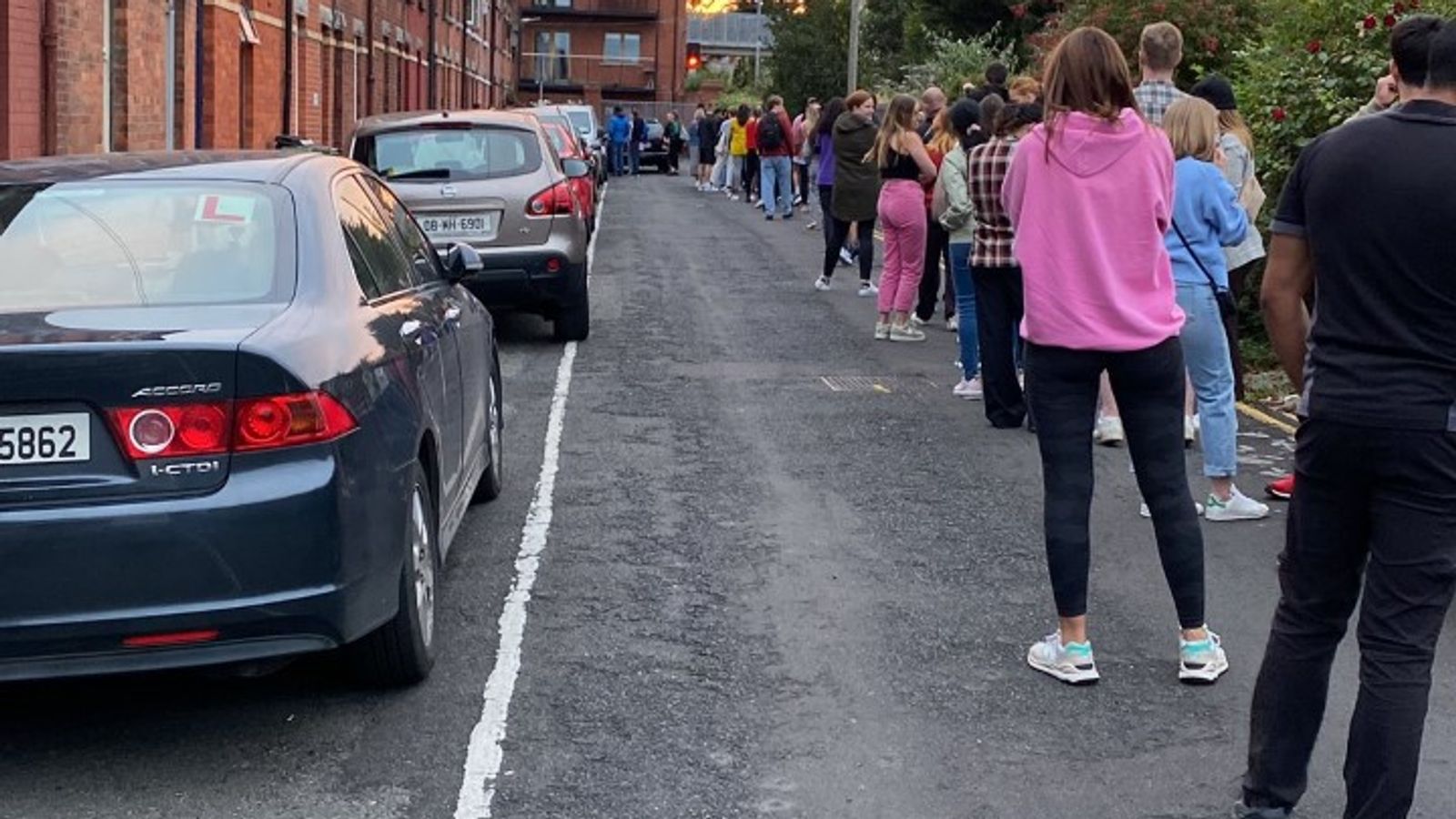It’s easy to lose sight of the scale of loss in Pakistan.
Even as we travel by boat through the heavily-hit Dadu district in Sindh Province, I struggle to comprehend what lies beneath the water. But we soon hear the horrendous stories of a community drowning in loss.
Crops, homes, livelihoods – all submerged.
The Kacha area is normally dry. In some places it’s now 20 feet deep.
I can just make out the tiny slither of the roof of a school poking above the surface. Next to it – a mosque is totally submerged.
In Sindh alone, 16,000 schools have been damaged or destroyed. Life will be put on hold for months to come. And it’s expected to get worse.
In the distance, we see a group of young boys rushing to higher ground – huddled together on a crumbling mud mound. They beckon us on shore – behind a crumbling wall are the people of Jan Mohammad.
Death toll from Pakistan floods passes 1,200 as more rain forecast
Pakistan flooding: Rescue missions under way but some people are too scared or simply won’t leave
Pakistan: Tourist destination engulfed by floods with fears of more heavy rain as people say ‘we are scared’
Most have lost their homes and have gathered on what little land is left here. There are suitcases packed hopefully. They’ve been stuck for three weeks with no clean water and very little food.
Lal Khatoon, who appears as the village matriarch – a forceful, passionate presence in a group of weary-looking people, tells me: “No one came here to help.
“Thank goodness my children got here. But they now have fevers and stomach problems.”
She wants to show me her house, but it’s impossible to see – now totally underwater.
There are around 100 people in this village and many of the children are getting sick. Waterborne diseases are spreading.
A mother shows me her son, who’s crying intensely.
His little body is covered in white spots and she says he got them as a result of the flood water.
Please use Chrome browser for a more accessible video player
Lal Khatoon’s three-month-old grandson is also struggling – he has a high fever.
The conditions are cramped – a goat picks from the scraps in a child’s small bowl of food.
I see a medicine bottle, but it’s surrounded by flies and the children are looking painfully thin.
There are no signs of aid trucks here, no planes dropping supplies. And the villagers worry that, if they leave, there won’t be any food or shelter anywhere else.
But it’s a risk staying put. More floodwater from the north is expected to make its way here in the days to come. The few homes left may not survive.
In the 2010 floods, help did reach this community. Not this time.
Pakistan is considered a climate hotspot. Yes, it is a victim of its geography. And yes, political and economic instability have left it underprepared for this crisis.
But it also has a strikingly small carbon footprint. It has emerged as a victim of a man-made disaster and global apathy.
Who foots the bill for disasters like this which hammer the most vulnerable and more importantly who pays to prevent them, should be the focus of an urgent and intense debate. And yet, it still is not.










